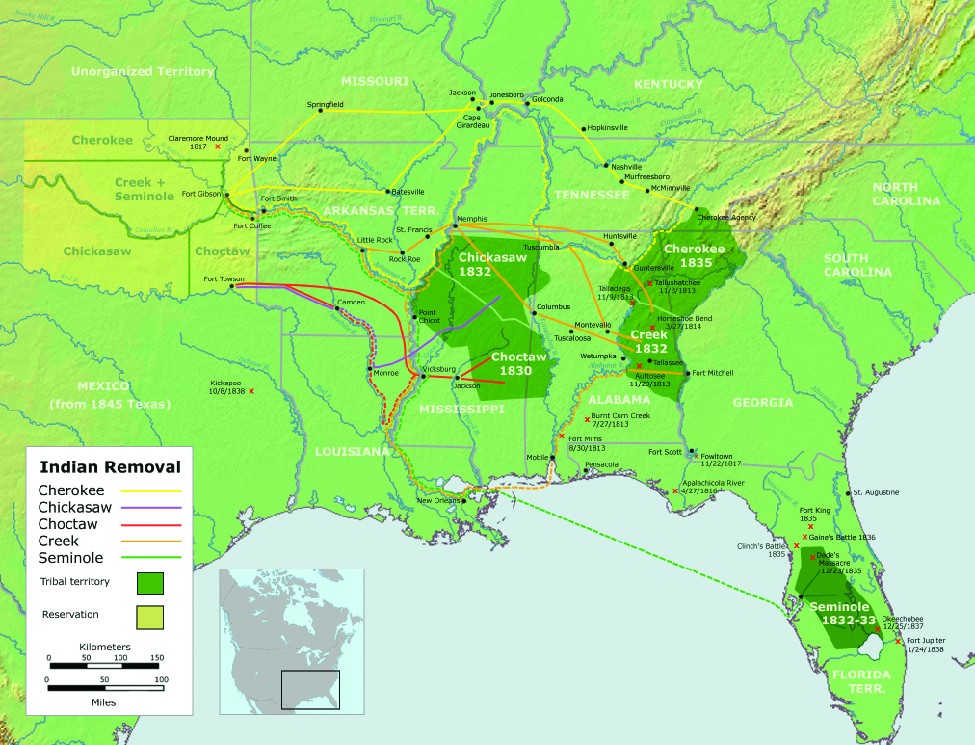
The Trail of Tears taken by the Cherokee tribe and other Native American tribes within the United States' territory during the time frame of 1830 -1838 is shown upon this map. The Trail of Tears was a brutal, long trek from the Native lands of the various tribes to their reservation land in western Oklahoma. This trip, undertaken by Native Americans under military guard, resulted in the deaths of a million Cherokee, and other Native American tribes suffered high casualties as well. This forced migration, the result of signed treaties after failures at resisting land take over through the legal system of the United States, as demonstrated in the Worcester v Georgia case and the case of the Cherokee Nation against the Georgia, was thus a tremendous blow the the various native peoples, created because their way of life, their culture, and their race were discriminated against and their land seen as valuable by Americans.
“Image Showing the Paths of the Various Native American Tribes That Participated in the Trail of Tears.” Lumen Learning, courses.lumenlearning.com/amgovernment/chapter/civil-rights-for-indigenous-groups-native-americans-alaskans-and-hawaiians/.
